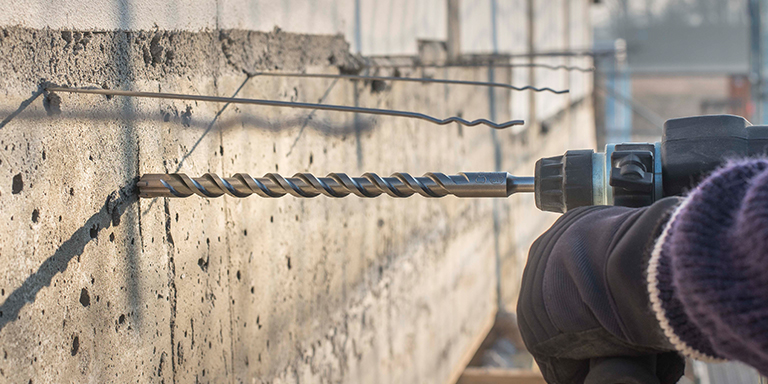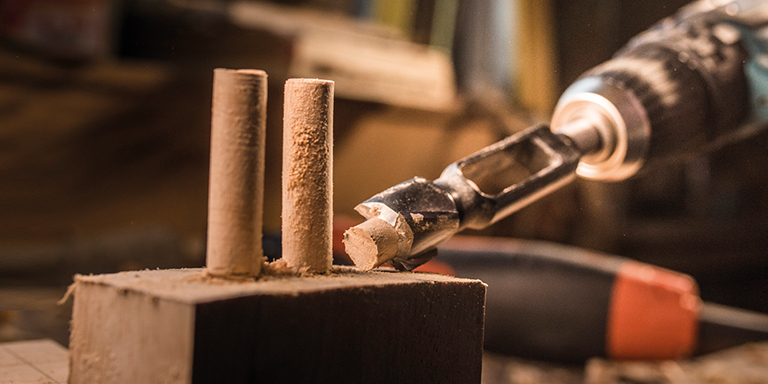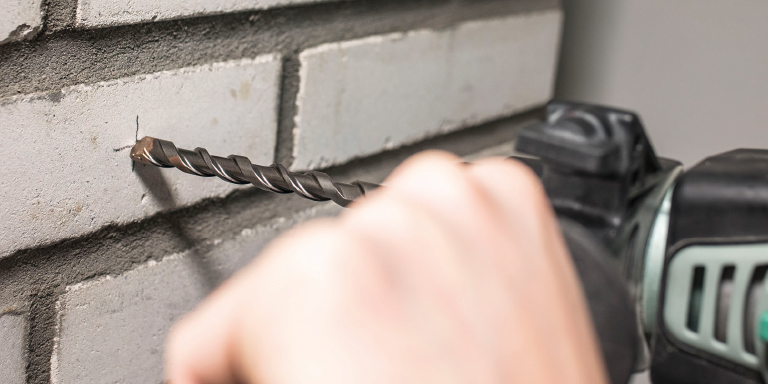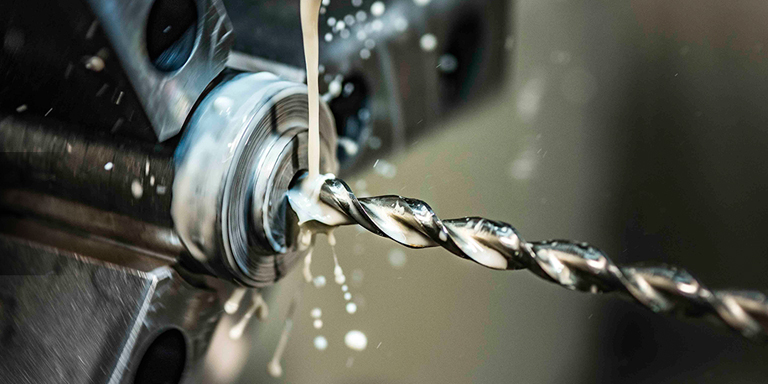
Tips & Tricks
Hammer drill bits

Heller hammer drill bits will also stand up to reinforcements. Despite this, it is still a good idea to check the wall structure with a detector before you start drilling and to drill masonry only wherever possible. Reinforcements are integrated into constructions for reasons of structural strength and shouldn‘t be cut if this can be avoided. If you cannot avoid this for design reasons, you need to consult a structural engineer before you start.
When you start drilling, it is a good idea to check the area for piping and cable routing. Cables and pipes normally lead vertically up and down to the socket or fitting. For this reason, it is a not recommended to drill directly above or below fittings or sockets. For through hole drilling you should always analyse the structure of the opposite side. Use a special detector for this purpose.
We recommend greasing the shaft end of the bit before inserting into the chuck. This will extend the service life of your hammer drill. Before fitting a plug, you should always remove material residues from the drill hole to guarantee the best possible safety for the plug.
Wood drill bits

Securely clamp the workpiece onto a base plate (rest) and slightly drill into the base plate when drilling through materials. This prevents cracks on the bottom of the workpiece.
Drilling with a box column drill creates precise holes and a straight progression of the drilling action. Holes produced with a hand-held drill require precise guiding by hand.
Pull the tool back through the bore regularly during drilling to remove chips from the drilling channel. In the event of a lack of ventilation, and hence the removal of chips, the drilling channel clogs up, the drill bit jams in the hole and causes the material to heat up.
The sharpness of drill bits can be maintained over a prolonged period of time, if the drill bits are handled with care. For this purpose, it is important to exclusively use tools in solid wood or wood materials. Metal or masonry will make the drill bit blunt or cause it to fracture.
Concrete and masonry drill bits

Impact drills are designed for processing masonry, stone and also concrete, depending on the type. The soldered-in carbide plate means that concrete drill bits can withstand heavy loads. However, special products are required to cut through reinforcements.
Before fitting a plug, you should always remove material residues from the drill hole to guarantee the best possible hold for the plug.
Metal drill bits

Regularly pulling back (venting) the drill bit prevents chips from depositing in the helical of the drill bit. If the hole is not vented and hence the chips are not removed, the drill bit will jam in the hole and may crack.
Drilling with a box column drill creates precise holes and a straight progression of the drilling action. Drills with a handheld drill require very accurate guiding.
Drilling into harder material may cause the tools to heat up. The blade wear progresses more severely and the probability of cracks increases. For a longer service life it is important to supply a suitable coolant over the entire drilling time.
The sharpness of the drill bit – and thus the cutting capability in metal and plastic – can be maintained over a prolonged period of time if the drill bits are handled with care. For this purpose, it is important not to use the tools in ceramics, masonry or any other "unsuitable" materials.






